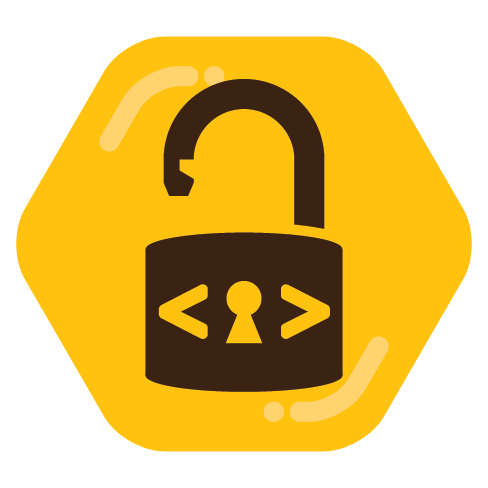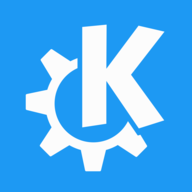

I was thinking more of its native file format it saves to. It said “import from Markdown” which seemed to suggest it is not saving all in Markdown (otherwise would have said opens and saves to). But maybe it is just badly worded.
I blog about #technology #gadgets #opensource #FOSS #greentech #traditionalwetshaving #LCHF #health #alternativeto #hamradio (ZS1OSS) #southafrica - see https://gadgeteer.co.za/blog. I also blog to various other social networks which I list at https://gadgeteer.co.za/social-networks-i-post-to.


I was thinking more of its native file format it saves to. It said “import from Markdown” which seemed to suggest it is not saving all in Markdown (otherwise would have said opens and saves to). But maybe it is just badly worded.


QOwnNotes (https://github.com/pbek/QOwnNotes) may be an option as it is pure Markdown and need not have both the code and preview windows open. I used it before moving to Obsidian. It has some options to customise its window views, but it is a long time since I used it, so not sure if it has that block mode you want. Logseq I seem to recall worked with blocks as it is an Outliner that does save in Markdown format, but I did not like that the outline blocks added characters to the file format that slightly broke compatibility with standard Markdown formats. But blocks was Logseq’s strength.


Although it says it “imports Markdown” so not sure if it is an actual Markdown format editor.


I switch between Main, Recording, and Gaming. Apart from backgrounds I have some apps specifically visible in that Activity, and also have a filtered desktop folder for each (each Activity has files that are only relevant to that activity). I did a video about my switching at https://www.youtube.com/watch?v=wq-7KEeH7_U and how it differs from virtual desktops.


I only choose to buy hardware that I can connect to Home Assistant, because I can still use it if the company goes bust or no longer supports it. I have one dashboard in HA that manages all my different devices. Point is, I still buy the hardware and the sale is made. I’m not going to buy 5 different standard products which must all be managed through separate apps. Open standards can open up to a much bigger market. There is good reason why so many OEMs opened up to the Matter protocol.
But as I say, I check first for compatibility, then I narrow my choices from there. So yes, right now your company’s IOT product won’t get onto my radar. Been there, done that, and got a handful of dead paperweights to show for it.


I suppose having a short summary with the post would go a long way in helping everyone decide whether to watch it or not. I do wish everyone would put summaries in, as too many just comment on the headline without even following the link. For me, what is always important before following it is, why would it be of interest to be to follow it further.


I use Sleep as Android for:
But chiefly it also has other stuff I use apart from the waking alarms such as sleep stats, warning for bedtime, lullabies when going to sleep, anti-snoring measures, noise recordings, 30 min power nap management, etc.


Thanks, yes, I especially like the use of the titles and description from inside the photo’s EXIF data. Just makes it easier to import from a source that already has that info in.


Thanks for letting me know - makes it worth posting here.


Manjaro KDE for me - it’s not Arch per se, otherwise Ubuntu would also be eliminated for being a derivative of Debian…


Problem is if social media is being used to stay in contact with friends / family then you are stuck with where they are, as they generally don’t move to a new network with you. If it is for news etc, I actually prefer a good selection of RSS feeds that I follow in my RSS reader.
I’m on lots of different social networks for blogging and although MeWe has my far biggest followings, it is centralised and non-FOSS - it’s the site I’ve also had the most troll issues on. The Fediverse (numerous site services to choose from) has the most potential, being open and federated widely.


Syncthing warns you and asks you to choose which is newer. If you have versions set it should also keep older versions for any roll back. But I make a point to rather work in one device at a time. I actually sync all my devices to a Docker instance running Syncthing, so it works from a central point versus all devices syncing to all devices. That Docker version is on 24/7.


To be fair to Obsidian, the default view is like three panes making it look busy, but you can toggle off both the left and right sidebar, leaving just the edit view which can be switched between edit and reading modes. Even the various toolbar icons need not be visible, and you could just use shortcuts to call them.
I use Syncthing to sync my Obsidian notes between desktop, server, Android, iPad, and Android tablet - it happens seamlessly in the background complete with version control.


I’m still using Obsidian (free but not FOSS) mainly because of the wealth of plugins. QOwnNotes was another good option I used before. I really liked Logseq, but the deal-breaker for me was its approach to primarily being an outliner - and that modified all the paragraphs of my markdown notes as they become referenced blocks (otherwise it is great). I like to stick to standard markdown for portability to any future app.


I love the idea of Wayland, but it only finally actually booted for me onto the desktop earlier this year (on Manjaro KDE). But it still randomly freezes for about a full minute, quite a bit. I am keen to move to it as my compositor hangs on X11 for some odd reason on KDE every time I try to do a rectangular area screenshot with Spectacle (mmm just realised it is also for around a minute - maybe I do have some other underlying issue), or when accessing the Compositor menu option. But X11 is still otherwise rock solid for me.
I second Fluent Reader. I even did a video about it as I was pretty impressed with it for its full text retrieval. It has an articles view, as well as lots of good display options.


Is this not the code though for the Android app at https://github.com/omnivore-app/omnivore/tree/main/android/Omnivore


I was impressed that their Android app is slick and works really well.


Thanks very much for that docker file. Yes I tried it about 2 years back, and I think Docker was not really an option then (or an easy one). I know what you mean by the RSS reader integration as I was using that with Wallabag. I’ll need to have a good look at the two again I think. Omnivore is still very new so not much 3rd party support, although they have an API and some webhook integration.
Could be yes - although I seem to think with my transfer from one Samsung to another it brought the files and settings over. Can’t remember for sure now as was over a year ago, but I did not recall any major issue.